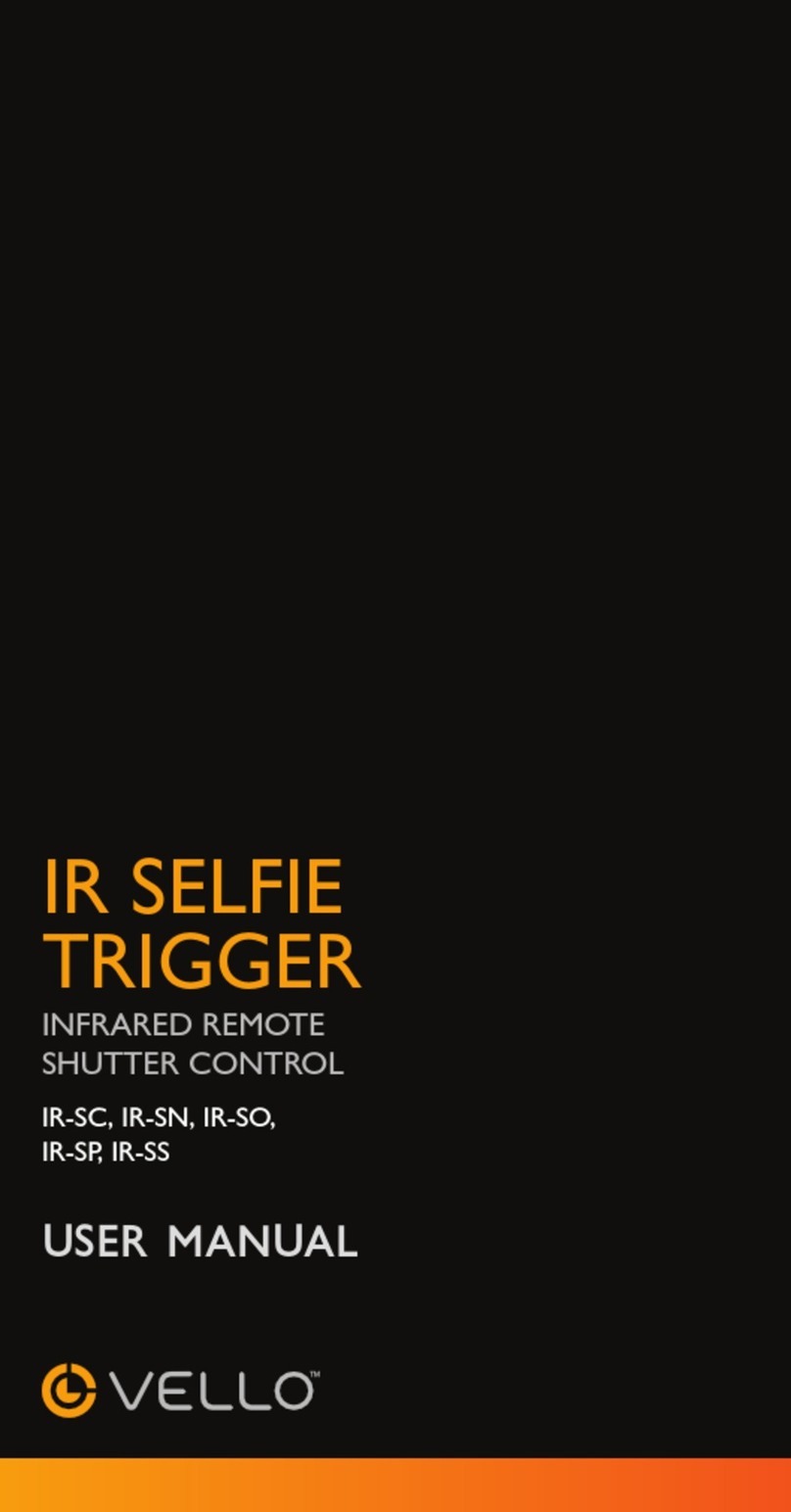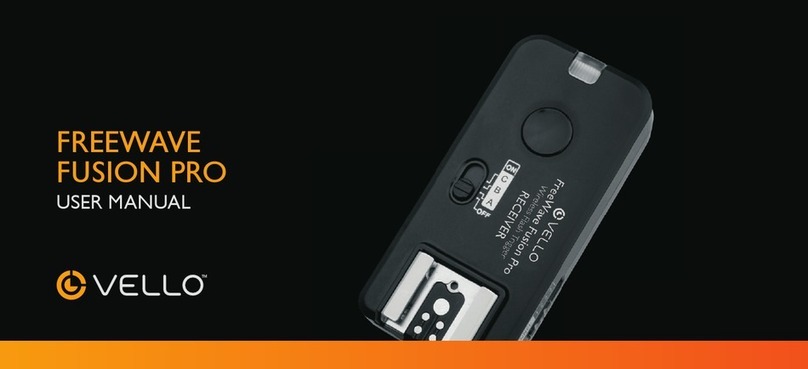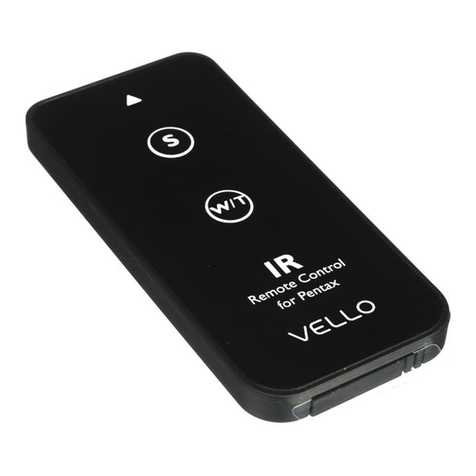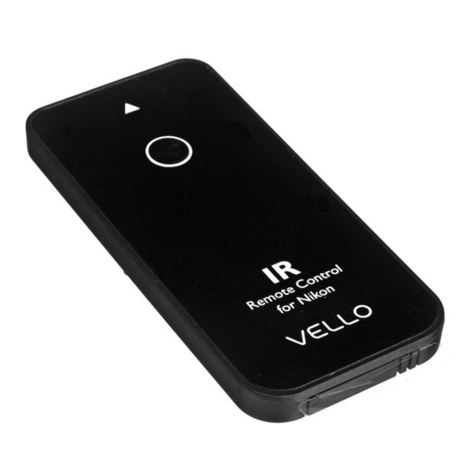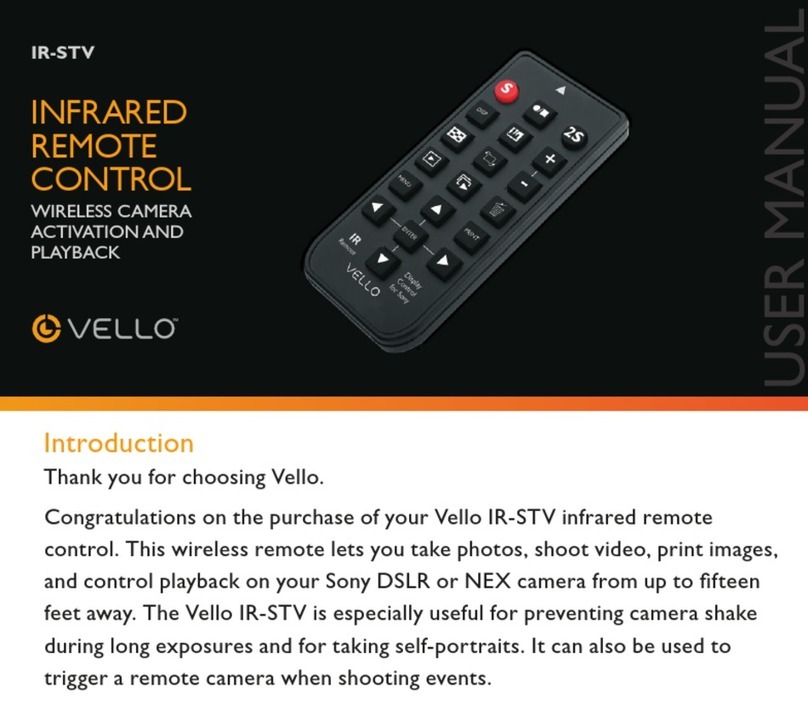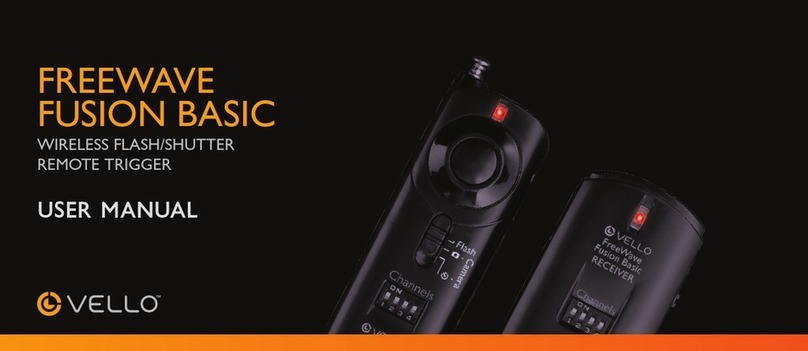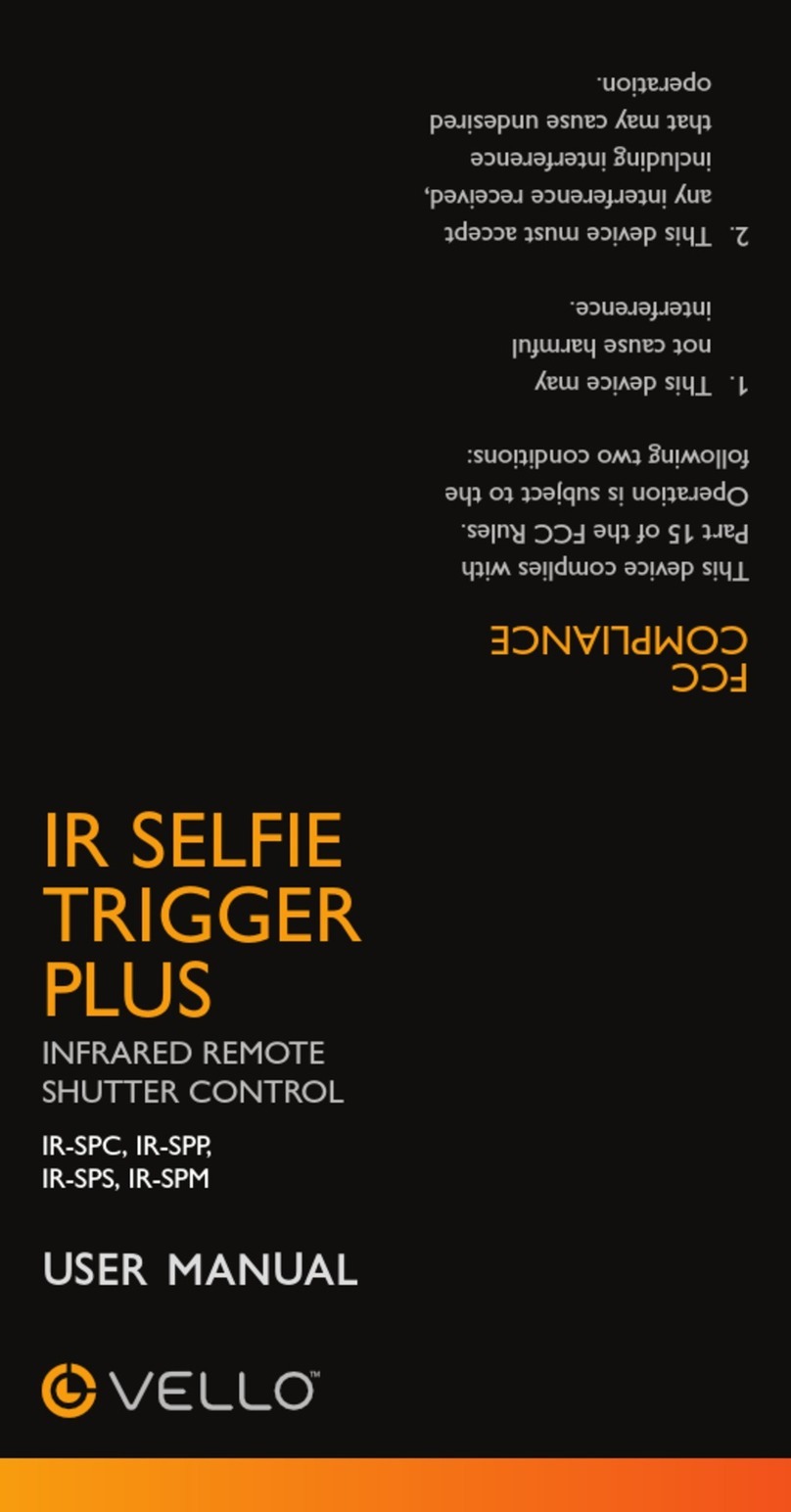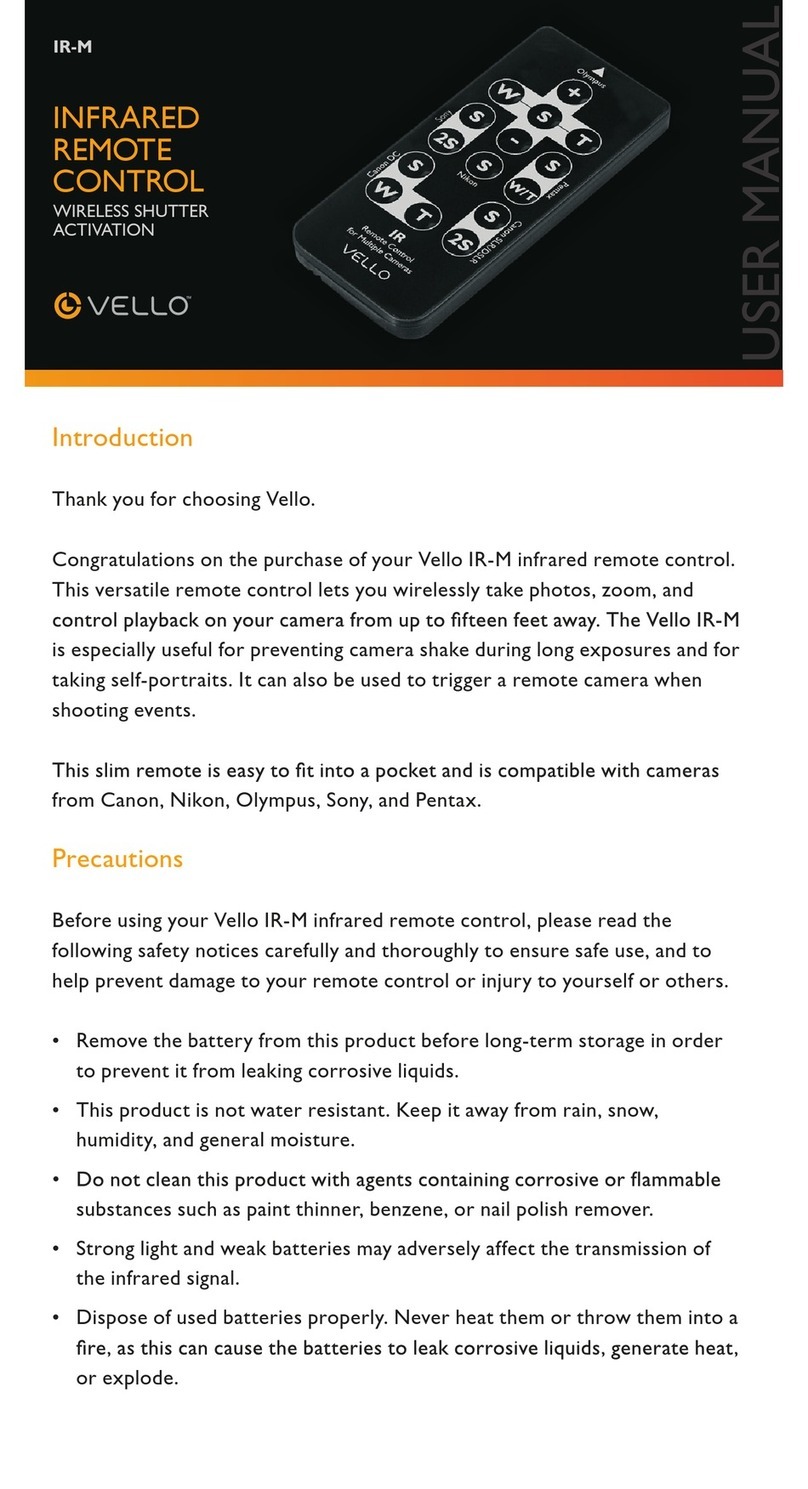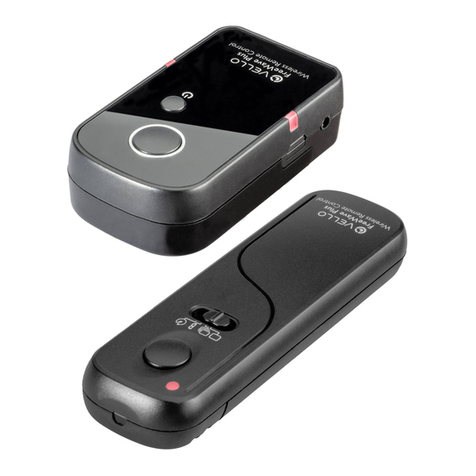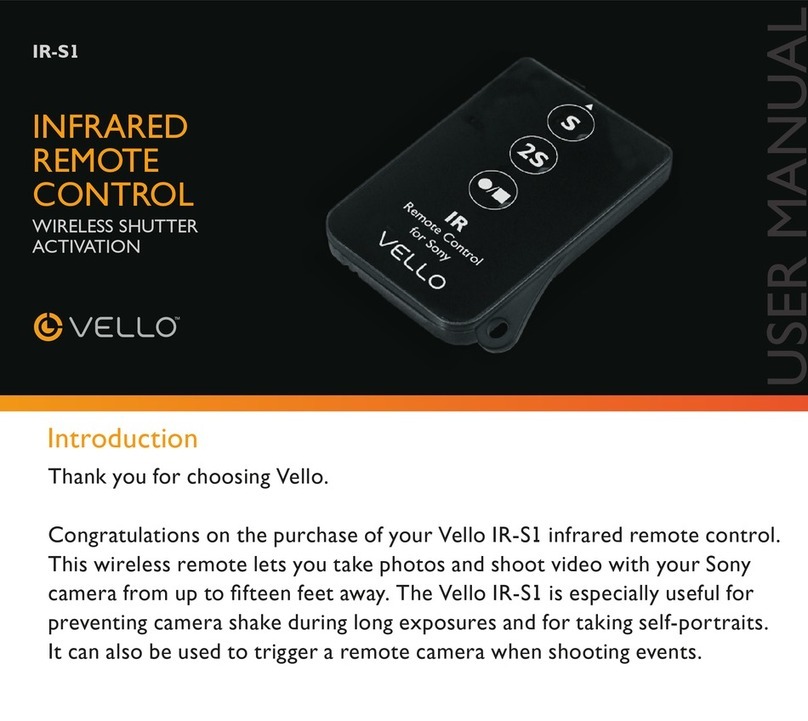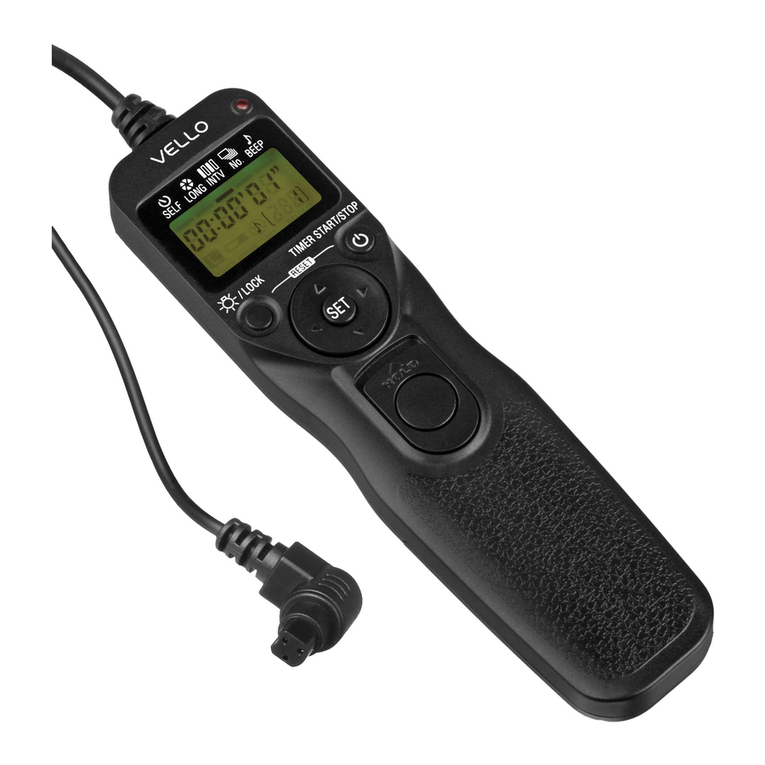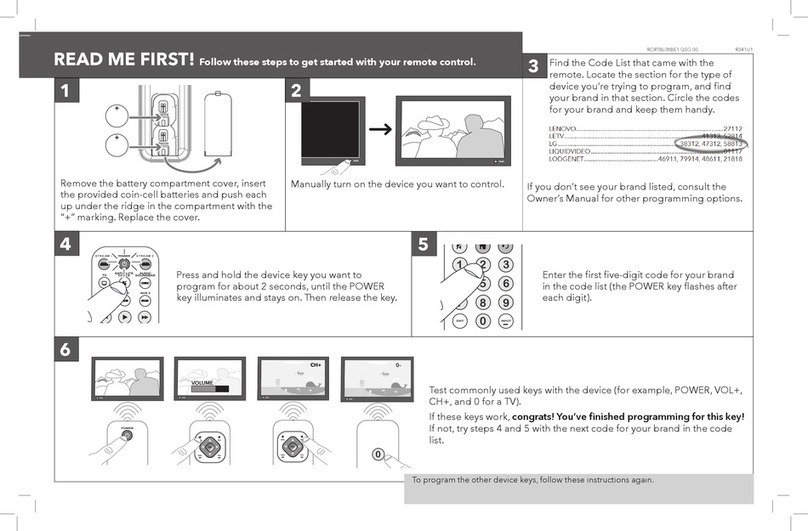INTRODUCTION
2
Thank you for choosing the
Vello FreeWave Micro Wireless
Remote Shutter Release for
Nikon. This compact set includes
a small transmitter and a low-
profile receiver that sits directly
on the 10-pin remote terminal—
it doesn’t require a cable or take
up space on the hot shoe. The
FreeWave Micro wirelessly
triggers the shutter of your Nikon
DSLR camera from a distance of
approximately 300′so that you
can shoot action while keeping
your distance from the camera
setup. You can use any one of
16 selectable radio frequencies
(channels)—this ensures that you
have a clear channel for operating
your camera even if other
wireless devices are operating in
the same area.
The FreeWave Micro transmitter
and receiver fit easily into a shirt
pocket—together they weigh
only 1.1oz. The transmitter
operates using one AAA battery.
The receiver is powered by the
camera.
Using the FreeWave Micro, you
can activate autofocus, trigger the
shutter, and open and close the
shutter when your camera is in
Bulb exposure mode. A shooting
alarm LED on the transmitter
blinks red each time a picture is
taken, so that you’ll always know
the exposure was made.
The FreeWave Micro also allows
you to take photographs without
touching your camera—a great
advantage when doing close-up
or macro photography, or when
you’re using long exposures.
Using the FreeWave Micro, you
won’t risk accidentally moving
your camera.
